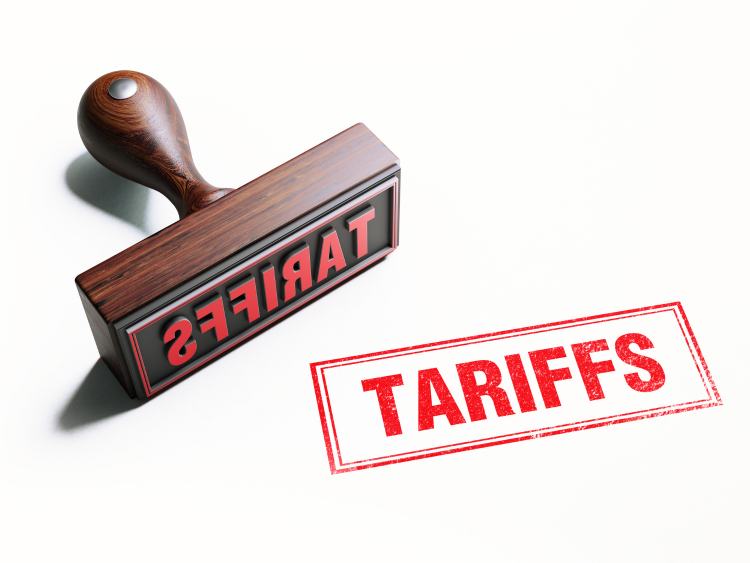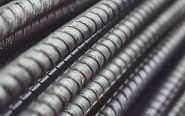Trade Cases

Steel at top of Canada’s list for potential retaliatory tariffs
Written by Laura Miller
January 9, 2025
As US President-elect Donald Trump threatens USCMA trading partners with 25% blanket tariffs, Canada is mulling retaliatory tariffs on imports from the US.
And American-made steel is among the products atop the list under consideration, according to a senior Canadian government official who spoke to CBC News.
Other possible targets include ceramics, including toilets and sinks, glassware, flowers, plastics, and Florida orange juice, CBC said.
To legally justify his tariffs on friends and foes, Trump is said to be “considering declaring a national economic emergency,” CNN reported on Wednesday.
Not surprisingly, Trump is considering any and all routes to get what he wants. “Nothing is off the table,” a source told CNN.
US is net importer of Canadian steel
While the US is a net importer of steel from Canada, importers on both sides have much to lose should both countries follow through on their tariff threats.
Note that the following analysis is based on import and export data from the US government. Import data includes December license data. Export data is annualized based on figures from January through November.
| US steel imports from Canada | 2024 | ||
|---|---|---|---|
| Total steel imports (mt) | 5,945,000 | ||
| Total steel imports ($) | $4.119 billion | ||
| Flat-rolled steel imports (mt) | 3,580,600 | ||
| Flat-rolled steel imports ($) | $4.084 billion | ||
| Canada’s steel imports from US | |||
| Total steel imports (mt) | 3,516,700 | ||
| Total steel imports ($) | $5.568 billion | ||
| Flat-rolled steel imports (mt) | 2,030,400 | ||
| Flat-rolled steel imports ($) | $2.809 billion | ||
In 2024, the US purchased approximately 5,945,000 metric tons (mt) of Canadian steel products, 3,580,600 mt of which were flat-rolled steel products.
Meanwhile, the US exported around 3,516,700 mt of steel to Canada last year, including 2,030,400 mt of flat-rolled steel.
This means the US imported 2,428,300 mt more total steel and ~1,550,200 mt of flat-rolled steel from Canada than it exported there.
If both sides had 25% tariffs in place in 2024, Canadian importers would have paid an additional $1.39 billion to import US steel products, while importers in the US would have paid $1.78 billion more.
For flat-rolled products, importers in Canada would have paid $702 million more, and US importers would have paid $1.02 billion in tariffs.
| Levies that would have been paid if 25% tariffs were in play | 2024 |
|---|---|
| US importers – total steel | $1.78 billion |
| US importers – flat-rolled steel | $1.02 billion |
| Canadian importers – total steel | $1.39 billion |
| Canadian importers – flat-rolled steel | $0.70 billion |
Déjà vu?
Trump instituted Section 232 tariffs on steel and aluminum products during his first term.
At the time, Canada responded tit-for-tat, placing retaliatory tariffs on imports from the US. Many of the products were chosen for political reasons rather than economic ones, as the AP noted in 2018.
Both countries eventually removed the tariffs after talks.
Fast forward to 2025, and it feels a little like déjà vu.
Florida orange juice is a potential target for Canadian tariffs, as the state is Trump’s adopted home, CBC noted. Sources who spoke to the news agency said Canadian officials are considering targeting other important products from the US swing states of Pennsylvania and Michigan, which swung to support Trump by narrow margins in the November 2024 election.
Here’s some additional food for thought. Check out what SMU Founder John Packard had to say just before the start of the S232 tariffs in 2018: Is the Trump administration the next black swan event?
Steel groups respond
While no final tariff decisions have been made by either government, Catherine Cobden, president and CEO of the Canadian Steel Producers Association (CSPA), told SMU that “tariffs would have serious consequences for the Canadian steel industry.
“As we saw in 2018 and 2019, tariffs between our two nations are harmful on both sides of the border. Steel trade between Canada and the United States must remain open and tariff free,” she stated.
“We have a tremendous opportunity to work together to combat our shared challenge of global excess capacity,” she added.
On the US side, Kevin Dempsey, president of the American Iron and Steel Institute (AISI), said he doesn’t want to speculate on potential policy actions since the president-elect is not yet in office.
However, “I will say that we do believe that tariffs are a legitimate tool for governments to use to address a range of difficult and important issues,” he told SMU.
Dempsey pointed out that both the US and Canada have increased tariffs on Chinese steel and electric vehicles in recent months “in response to massive Chinese government subsidies and other forms of unfair trade.”
He also noted that “American steel producers believe these tariff actions were fully justified, but we also believe more needs to be done.
“My hope is that the governments of the United States and Canada will work together to address these challenges that impact both countries, just as they did when they negotiated the USMCA during President Trump’s first term,” Dempsey concluded.

Laura Miller
Read more from Laura MillerLatest in Trade Cases

Bessent on Vietnam: 20% tariff stands, Section 232 protections apply
US Treasury Secretary Scott Bessent told reporters that tariffs for Vietnamese imports to the US are 20% and "specific industries" have trade protections under the Section 232 tariffs.

Steel groups welcome passage of budget bill
Steel trade groups praised the passage of the Big Beautiful Bill (BBB) in Congress on Thursday.

Canada moves to curb steel imports with TRQs
Canada has implemented tariff-rate quotas (TRQs) on steel imports to help stabilize its domestic market.

Commerce launches probe into unfairly traded rebar imports
Here are the details and a case timeline for the rebar trade case recently initiated by the Commerce Department.

Leibowitz on Trade: Who is winning the tariff debate?
Most economists will tell you that universal tariffs will result in inflation and reduce demand, causing a recession or worse. (After all, this is what happened in the 1930s). It is a rare product that is so essential that demand will not go down if prices go up.
